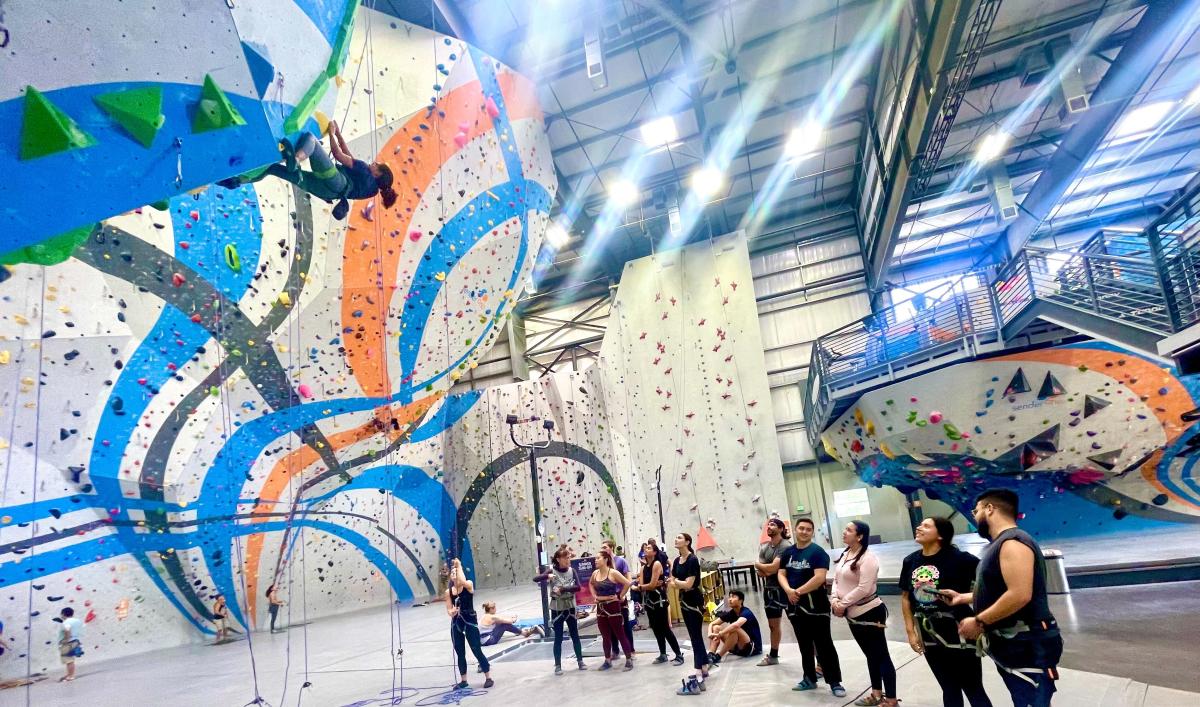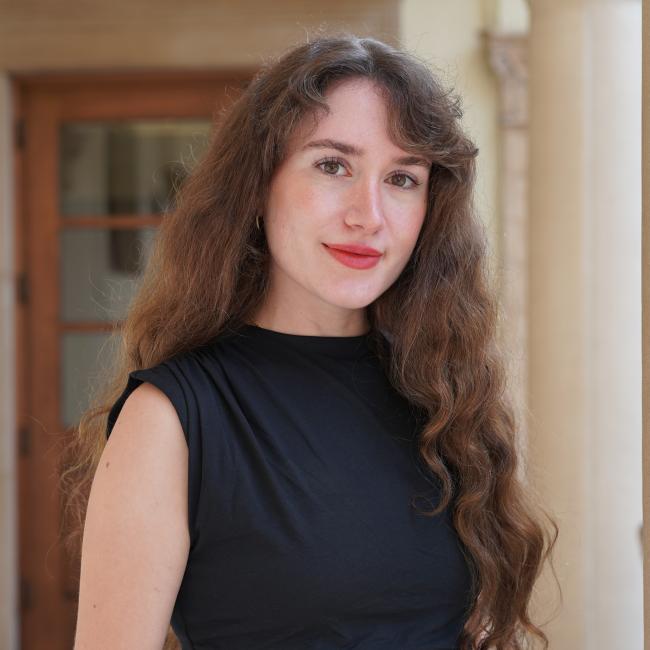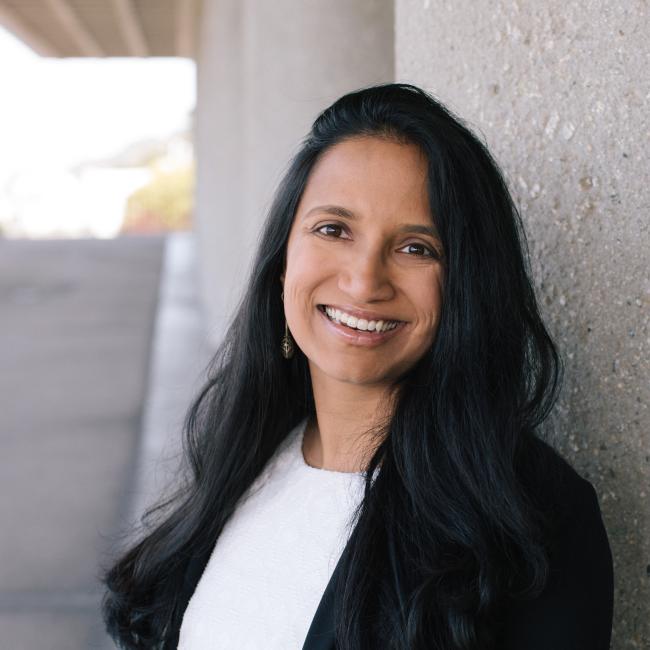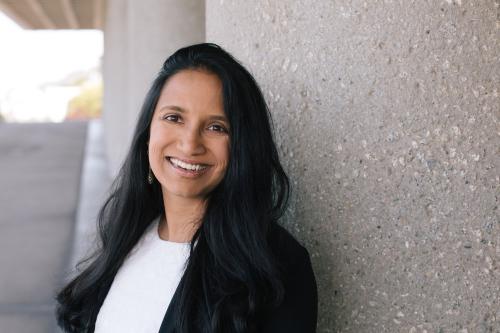
Member Spotlight: Aparna Bhaduri studies brain development to identify cancer origins
Meet Dr. Aparna Bhaduri, a neuroscientist whose work bridges human brain development and cancer research. She investigates how the many different cell types in the brain arise and explores why certain developmental mechanisms reappear later in life in aggressive brain cancers. Here, she shares how she uses “mini brain” organoids in her lab, what drives her curiosity and her passion for rock climbing.
Bhaduri is an assistant professor of biological chemistry in the David Geffen School of Medicine.
Tell us about your research.
My lab studies human brain development and brain cancer — two processes that are more connected than they might seem. The human brain is uniquely complex, largely due to the expansion of specific regions like the cerebral cortex, the outermost, wrinkly layer of the brain responsible for higher-order thinking. What’s fascinating is that most of the cells that make up this structure are generated before birth, during a phase of peak neurogenesis when billions of neurons form each day. We’re working to understand how this process unfolds and what drives the emergence of different cell types in the brain.
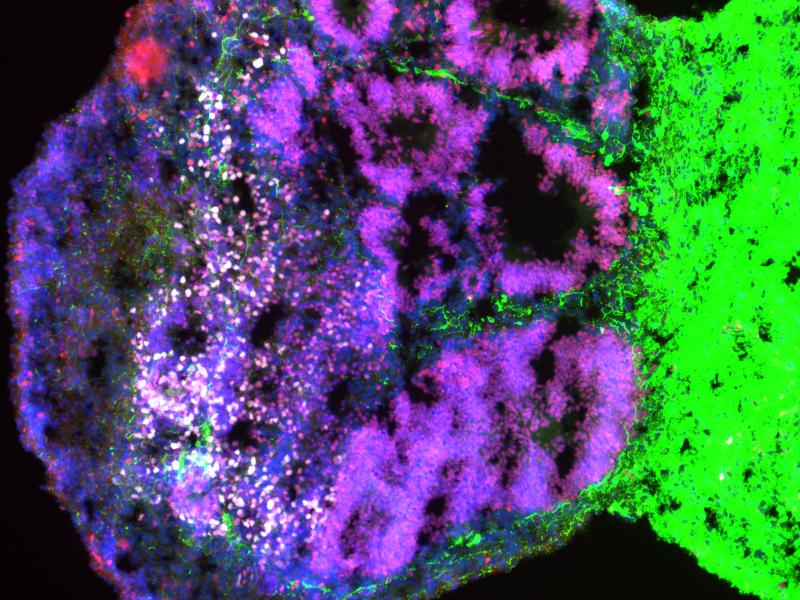
These same developmental processes also appear in glioblastoma, the most aggressive form of adult brain cancer. Certain cell types that exist only in the developing brain disappear before birth, only to re-emerge decades later in glioblastoma. The first time they exist, they help build the brain. The second time, they drive cancer. We want to understand why this happens and why glioblastoma is so resistant to treatment.
Our lab uses a combination of experimental and computational approaches. We generate stem cell-derived brain organoids to mimic aspects of development. We also integrate tumor samples from consenting patients undergoing surgery at UCLA, preserving their biological complexity to better understand what makes glioblastoma so aggressive. By combining these models with single-cell RNA Short for RiboNucleic Acid, this molecule carries genetic messages from DNA and is found inside living cells. These messages tell cells to make the proteins that play many critical roles in the body. RNA Short for RiboNucleic Acid, this molecule carries genetic messages from DNA and is found inside living cells. These messages tell cells to make the proteins that play many critical roles in the body. sequencing and bioinformatics Combines biology and computational science. It involves analyzing biological data using computational tools, such as algorithms and databases. Bioinformatics helps researchers sift through large amounts of data to understand biological processes, and study genes, proteins and genomes. bioinformatics Combines biology and computational science. It involves analyzing biological data using computational tools, such as algorithms and databases. Bioinformatics helps researchers sift through large amounts of data to understand biological processes, and study genes, proteins and genomes., we can examine gene expression in individual cells, uncovering the signals that drive brain formation and fuel tumor development.
How has being a UCLA Broad Stem Cell Research Center member helped you as a scientist?
The Broad Stem Cell Research Center is awesome — it’s been so supportive. It fosters a strong research community through working groups and events like the annual symposium, which bring together experts from UCLA and beyond. It’s a great opportunity to step away from your own work and learn from others in the field. I always encourage my trainees to attend, and it’s great for them to network with both the speakers as well as other trainees who are asking similar questions in their research and career trajectories.
It’s also been incredible collaborating with our internal community of scientists. I’m currently working on a project with fellow center members Drs. Heather Christofk and Harley Kornblum to investigate how different metabolic states impact brain development and whether they contribute to disease.
Beyond that, the center has provided funding to support several of my projects. The one in particular that meant the most was when I first joined UCLA and got a seed grant that allowed me to pursue some higher risk experiments when I didn’t yet have external funding. That support was critical during the COVID-19 pandemic, when starting a lab was especially challenging.
Additionally, several of my trainees have benefited from support from the center, and the BSCRC team has been incredibly helpful in navigating the grant process with the California Institute for Regenerative Medicine, or CIRM. It’s really meaningful and empowering to have that support.
Have you always wanted to be a scientist?
I’ve always loved science, but I didn’t initially see a clear path beyond medicine. My uncle, who was a physicist and professor, encouraged me to consider research. In college, I worked in an organic chemistry lab for almost four years and got to learn firsthand about the scientific process and see what research looks like on a day-to-day basis. That’s when I knew that I wanted to pursue a Ph.D.
At that point, I shifted to studying cancer biology, focusing on epithelial development and skin cancer. I had always been fascinated by the brain, but initially didn’t feel like I was a strong enough scientist to pursue a neuroscience program. For one, I felt the other students in my class were smarter. And two, I had accidentally made a mistake on my grad school application and lived in fear they would notice and kick me out! No one did of course, and my confidence slowly grew.
I think that the brain is the most beautiful result of engineering that has ever existed.
When it came time for my postdoctoral training, I knew it was time to take the leap. I joined a lab at UCSF, where I studied both brain development and brain cancer — two fields that, as I now see, are deeply intertwined.
What motivates you to pursue your research?
There are two main drivers for me. First, I have a lot of fun getting to do off-the-wall, ambitious things in the lab. We have a term that we use to describe challenging but high-reward experiments: “hard-mode.” For example, we came up with the idea to take patient samples, isolate a specific cell type, and then put these on organoids — and were stunned when it actually worked. Science is a really explorative, innovative field, and it’s a privilege being able to do this for work. That really motivates me.
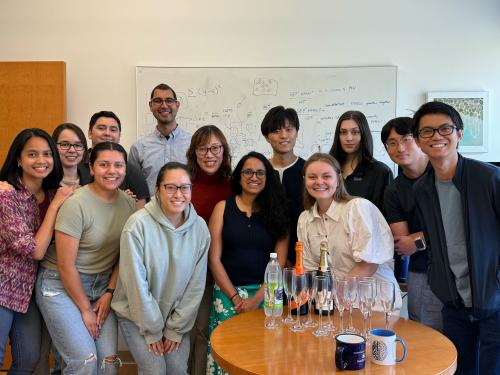
Second, I love working with students and postdocs. It’s incredibly rewarding to collaborate with them, mentor them, learn from them and see them grow as scientists. We get to work as part of a team and build something together — they’re amazing and so central to the job.
Where and when are you the happiest?
In the context of work — which is honestly a huge part of my life — I'm happiest when we’re holding brainstorming sessions and my team and I are focusing purely on the science. Those meetings, when everyone is firing on all cylinders, are so engaging and a great opportunity to push projects forward. We get to really think about the science and hear what everyone is thinking — it feels like a team sport.
What’s something most people might not know about you?
I love indoor rock climbing. Note the indoors — I’m actually kind of afraid of heights. My husband and I climb multiple times a week and we do a lot of top roping, where one person climbs while the other belays from below. It’s a great mental and physical activity, and I really enjoy it.
